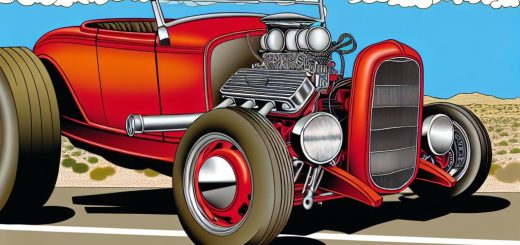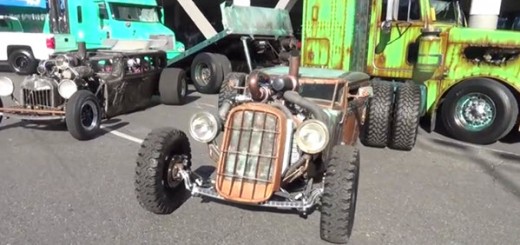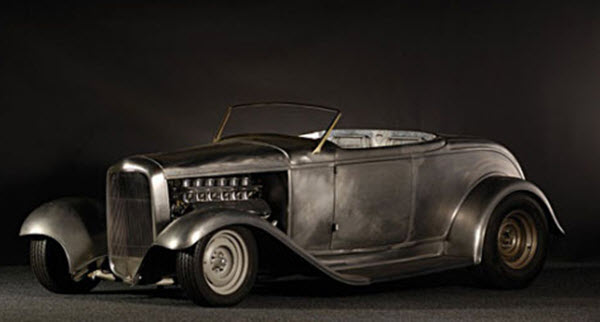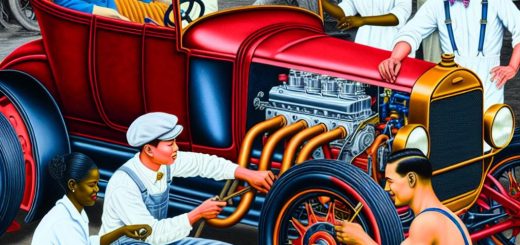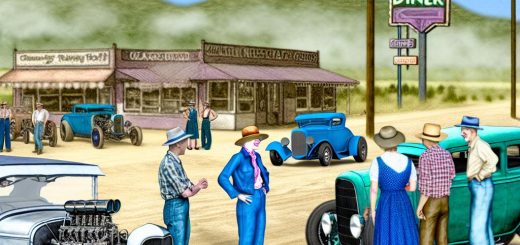Contents
The Beginnings of Hot Rod Culture
The hot rod culture, a prominent staple of American automotive passion, traces its origins back to the 1930s. Born out of a combination of technological advancements and cultural shifts, this movement marked a significant change in how automobiles were perceived and utilized. The emergence of hot rod culture during this decade was not merely a hobby but a profound shift in automotive history, significantly influencing the development and perception of automobiles in America.
Technological Influences
During the 1930s, significant technological advancements occurred in automobile engineering. One of the most notable developments was the introduction of the Ford V8 engine in 1932. This engine was instrumental in the hot rod movement due to its affordability, power, and availability. It served as an ideal platform for modification, which was a key interest for early hot rodding enthusiasts. These innovative individuals began experimenting with the V8 engine, pushing its limits to extract more speed and performance. This experimentation was not limited to engine modifications; it extended to various components of the vehicle, paving the way for the customized vehicles we associate with hot rodding today.
Innovation and creativity drove these modifications, which included adjustments to the engine, suspension, and bodywork. Early hot rodders sought to reduce weight while increasing power, aiming to achieve optimal performance. This pursuit of speed culminated in the aerodynamic alteration of cars, as enthusiasts often stripped them down to their bare essentials or altered their shapes for improved speed potential.
The Influence of the Great Depression
The economic backdrop of the 1930s, marked by the Great Depression, played a crucial role in the rise of hot rods. This era saw widespread economic hardship, leaving many young Americans with limited employment opportunities and a surplus of spare time. In an era defined by thriftiness and creativity born out of necessity, these enthusiasts turned to cars as a pastime and an avenue for innovation.
By acquiring old, affordable cars, they embarked on projects transforming these vehicles into faster and more efficient machines. On a tight budget, resourcefulness became a hallmark of the hot rod culture. Enthusiasts salvaged parts from various sources, often repurposing and innovating to enhance their vehicles’ performance. This tinkering and mechanical mastery transformed ordinary cars into personalized machines.
Southern California: The Hotbed of Activity
Southern California emerged as the epicenter of the burgeoning hot rod scene. The region’s unique geographical and meteorological features, including dry, open spaces, made it ideal for automotive enthusiasts. These vast areas provided excellent conditions for racing and testing modified cars. The dry lake beds of the Mojave Desert, such as the El Mirage Dry Lake, became popular locations for speed trials and gatherings. These naturally flat surfaces offered perfect venues for unleashing the power of modified cars and testing their limits.
In Southern California, hot rod culture flourished, creating a close-knit community of like-minded individuals who gathered to share ideas, techniques, and experiences. These informal meet-ups and events became crucial in advancing hot rodding knowledge, with participants exchanging innovative modifications and breakthroughs.
Growing Popularity and Legal Challenges
As the 1930s progressed, hot rods’ popularity rose exponentially. The culture, initially a niche interest, garnered significant attention from the public and media. However, this increasing visibility brought about legal challenges. Unregulated racing on public roads raised safety concerns and drew the ire of law enforcement. Consequently, law enforcement agencies began cracking down on street racing activities, leading hot rodders to seek alternative, legal venues for their pursuits.
The pursuit of legitimacy and safety led to the establishment of organized events and clubs dedicated to hot rod racing. Enthusiasts began to formalize their gatherings, organizing events that followed safety protocols and competition rules. This development not only ensured participant safety but also helped elevate hot rodding to a more respected status within the automotive world.
Influential Figures and Legacy
Key figures emerged within the hot rod community, significantly contributing to its growth and enduring legacy. Individuals such as Wally Parks played instrumental roles in legitimizing and promoting the culture. Parks, among others, championed organized racing as a safer alternative to street racing, advocating for the formation of associations and clubs to provide a structured environment for enthusiasts.
Their efforts culminated in the establishment of organizations such as the National Hot Rod Association (NHRA), which laid the groundwork for the hot rod movement to expand and thrive. By advocating for organized racing events, these pioneering figures ensured that hot rodding became more than a mere pastime; it evolved into a recognized and respected segment of automotive culture.
The legacy of these early pioneers continues to shape the automotive landscape today. The hot rod culture of the 1930s set the stage for future generations of automotive enthusiasts, fostering a spirit of innovation, customization, and community. The passion for modifying and enhancing vehicles persists, with modern hot rodders drawing inspiration from their predecessors’ creativity and ingenuity.
In summary, the origins of the hot rod culture in the 1930s were the result of a confluence of technological, economic, and social factors. From the innovation of the Ford V8 engine to the creative spirit of enthusiasts amid the challenges of the Great Depression, the early hot rod scene set the stage for a lasting impact on automotive history. The pioneering work of hot rodders during this decade laid the foundation for a dynamic and enduring culture that continues to captivate automotive enthusiasts worldwide.



